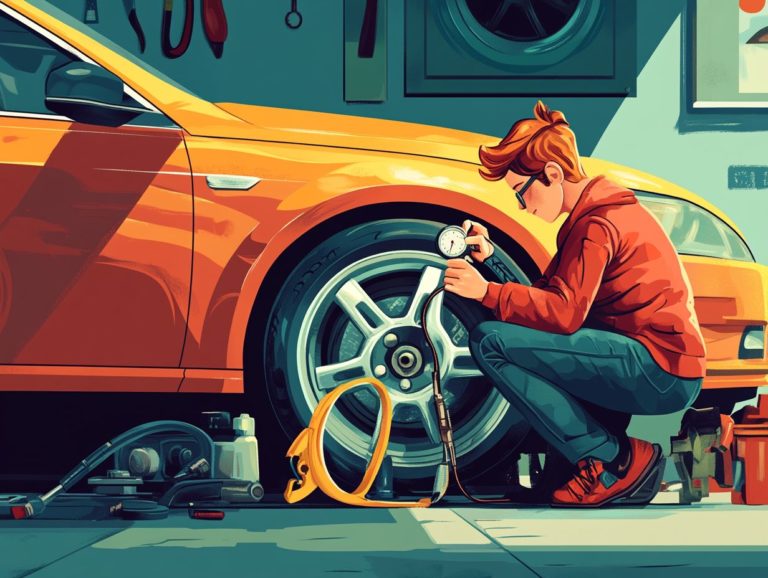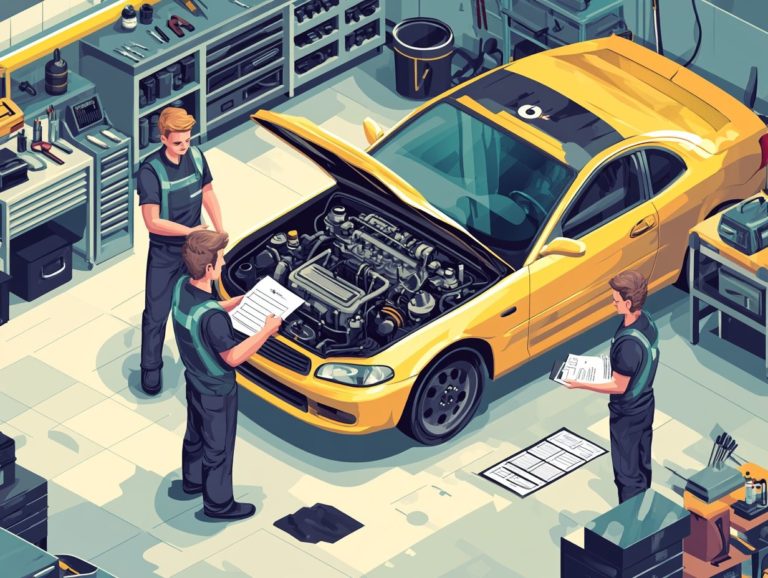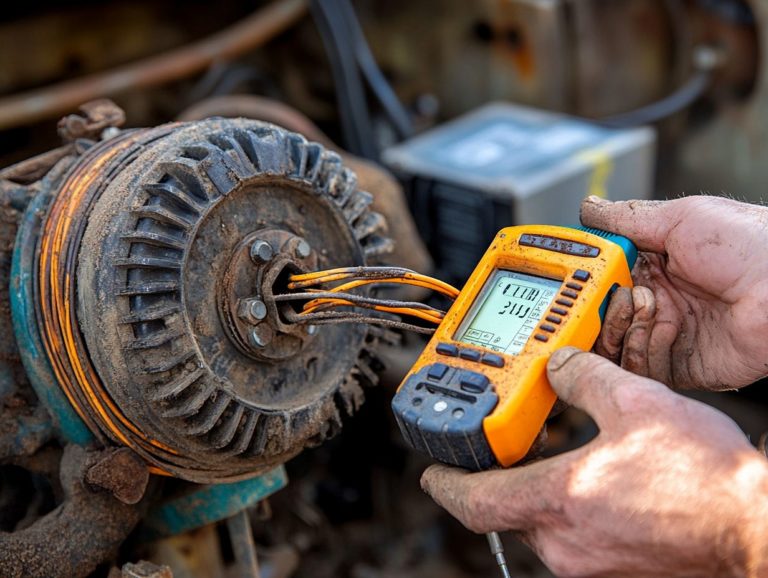When Should You Replace Your Timing Belt?
Timing belts are essential elements of your vehicle s engine, playing a vital role in ensuring everything operates smoothly and efficiently.
Grasping the significance of a timing belt and its maintenance can save you from expensive repairs down the line.
This guide will assist you in recognizing the signs that indicate it s time for a replacement, how frequently you should change it, and whether you should handle the task yourself or enlist professional assistance.
Stay informed to maintain the optimal performance of your engine!
Contents
- Key Takeaways:
- Understanding Timing Belts
- Signs that Your Timing Belt Needs to be Replaced
- How Often Should You Replace Your Timing Belt?
- Replacing Your Timing Belt
- Summary
- Frequently Asked Questions
- When should you replace your timing belt?
- What are some signs that it’s time to replace your timing belt?
- What happens if you don’t replace your timing belt?
- Can you replace the timing belt yourself?
- Do all vehicles have timing belts?
- Is it necessary to replace other components when replacing the timing belt?
Key Takeaways:
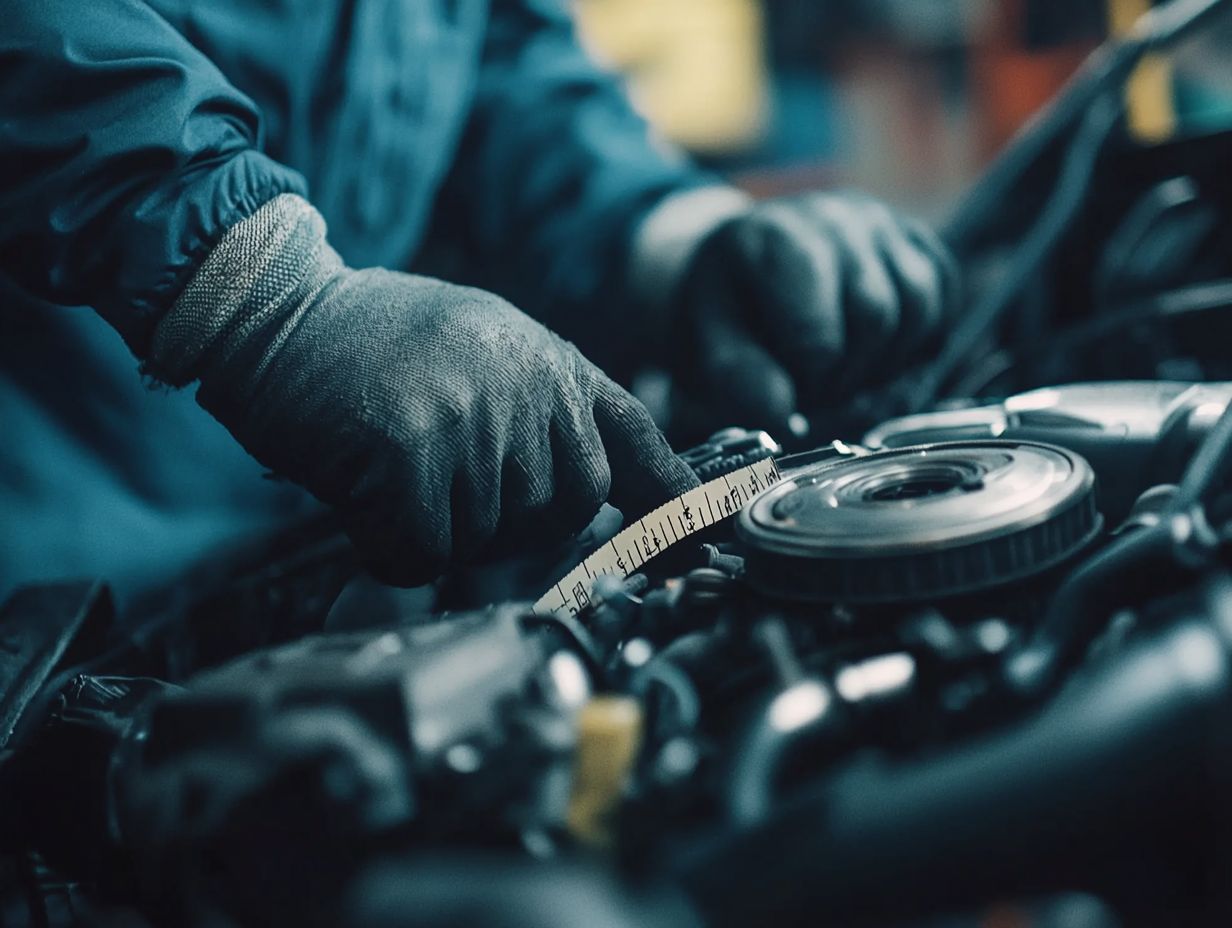
- Regular maintenance and replacement of timing belts is crucial to avoid major engine damage.
- Look for visible wear and tear, unusual noises, and performance issues.
- Follow your manufacturer s recommendations and consider mileage and driving conditions for replacement timing.
Understanding Timing Belts
Recognizing the critical role timing belts play in your vehicle s engine is essential for effective maintenance and avoiding costly repairs. A timing belt is a vital component that synchronizes the crankshaft and camshaft, ensuring your engine operates smoothly.
Regular inspections and timely interventions at a reputable service center, like Honest Accurate Auto Service in Colorado Springs, can help you prevent serious problems, such as engine failure or oil leaks, that could arise from neglecting this crucial part.
By staying informed about timing belt maintenance, you can save yourself both time and significant repair costs in the future.
What is a Timing Belt?
A timing belt is a vital part of your internal combustion engine. It synchronizes the rotation of the crankshaft and camshaft, ensuring your engine runs smoothly.
This synchronization helps maintain your engine’s timing, allowing it to function efficiently. You’ll find that timing belts vary between non-interference and interference engines; non-interference engines can handle a belt failure better without major damage, while interference engines can suffer catastrophic damage.
Typically made from reinforced rubber, these belts withstand high temperatures and stress but don t last forever. Expect to replace yours every 60,000 to 100,000 miles. Check your vehicle’s manual for specific replacement recommendations, as neglecting this maintenance can lead to serious issues.
Importance of Timing Belt Maintenance
Regular maintenance of your timing belt is crucial to prevent engine damage and high repair costs.
Ignoring this part can lead to engine misfires, diminished performance, and even full engine failure. These issues disrupt your daily commute and can lead to expensive repairs.
If the timing belt snaps unexpectedly, it can leave you stranded. Make timely inspections by certified mechanics a priority.
Certified mechanics can evaluate your timing belt s condition accurately. Services at trusted shops like Honest Accurate Auto Service in Colorado Springs can give you peace of mind and keep your vehicle in optimal shape.
Signs that Your Timing Belt Needs to be Replaced
Recognizing the signs that your timing belt needs replacement is critical. This helps prevent serious engine problems and unnecessary repair costs.
Visible Wear and Tear
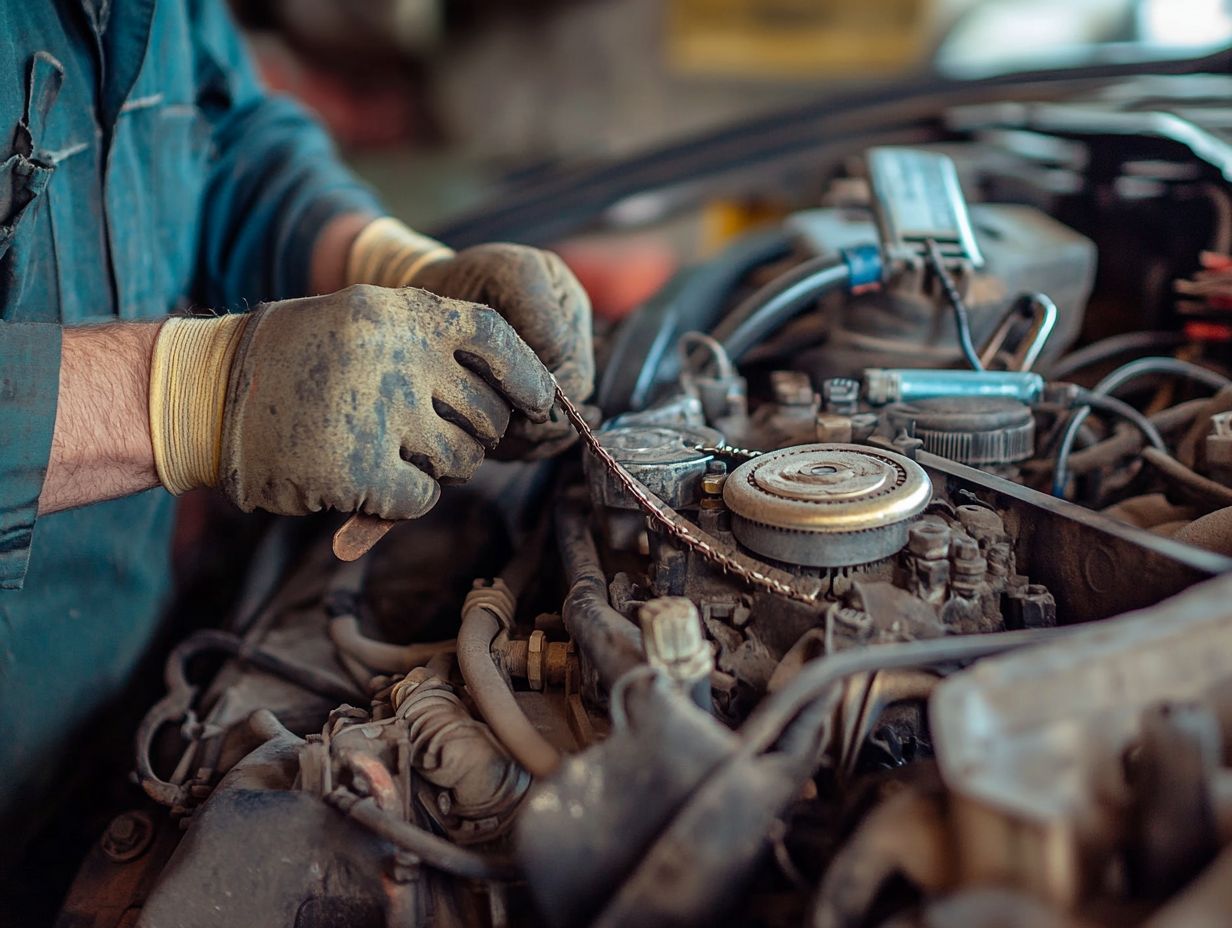
Visible wear and tear on your timing belt think cracks, fraying, or missing teeth signals that it s time to take action. Ignoring these signs can lead to serious engine problems down the line.
These issues can create misalignment of the engine parts, which messes with the timing of the engine’s valves and ultimately impacts engine performance. A neglected timing belt could cause your engine to misfire or operate inefficiently, leading to decreased fuel efficiency and increased emissions. A snapped timing belt isn t just a headache; it can lead to catastrophic engine damage that you definitely want to avoid!
Make sure to inspect your timing belt every 60,000 to 100,000 miles to ensure your engine stays in top shape! Regular inspections are essential for catching these wear signs early.
Unusual Noises and Performance Issues
Experiencing unusual noises or performance issues in your vehicle, like grinding or slapping sounds? These can often point to problems with your timing belt.
These symptoms may indicate that the timing belt is worn out or malfunctioning, which could lead to engine misfires and a noticeable dip in overall performance. When the timing belt fails to synchronize the engine’s components properly, you might encounter erratic engine behavior and reduced power delivery. If you notice such signs, it’s essential to address the issue without delay.
Consider scheduling a thorough inspection with a qualified mechanic, as timely intervention can prevent more severe engine damage and costly repairs. Ignoring these warning signals could lead to even bigger complications down the road!
How Often Should You Replace Your Timing Belt?
Understanding the optimal frequency for replacing your timing belt is crucial for preserving your engine’s health. Most manufacturers provide specific replacement intervals that depend on factors such as mileage and the type of vehicle you own.
Staying informed about these recommendations will ensure your engine operates smoothly and efficiently.
Manufacturer Recommendations
Manufacturer recommendations for timing belt replacement intervals are essential to follow, as they stem from extensive testing and can have a significant impact on your engine’s longevity. Each manufacturer sets these intervals based on various factors, including engine design and materials, which is why you ll see differing guidelines across brands.
By adhering to these recommendations, you not only help prevent unexpected engine failures but also sidestep the costly repairs that can arise from belt malfunctions. Neglecting these guidelines can lead to serious consequences, such as timing belt breakage, potentially resulting in severe engine damage.
It s crucial for you to regularly consult your vehicle’s manual for the most current recommendations, as updates may occur due to advancements in technology or changes in manufacturing standards. Staying informed ensures your engine remains in top condition and avoids unnecessary headaches down the road.
Factors that Affect Timing Belt Lifespan
Several factors can influence the lifespan of your timing belt, including your driving conditions, mileage, and how well you maintain your vehicle.
If you have aggressive driving habits think rapid acceleration and frequent braking you re likely putting extra stress on this essential component. Environmental factors such as extreme temperatures and exposure to pollutants can also speed up wear and tear, adversely affecting its functionality.
The condition of other engine components, like the water pump and tensioners, is also crucial; if they re worn out, they can create unnecessary strain on the timing belt, ultimately shortening its lifespan. Therefore, prioritizing regular preventive maintenance can significantly enhance the longevity of your timing belt and improve your overall engine performance.
Replacing Your Timing Belt
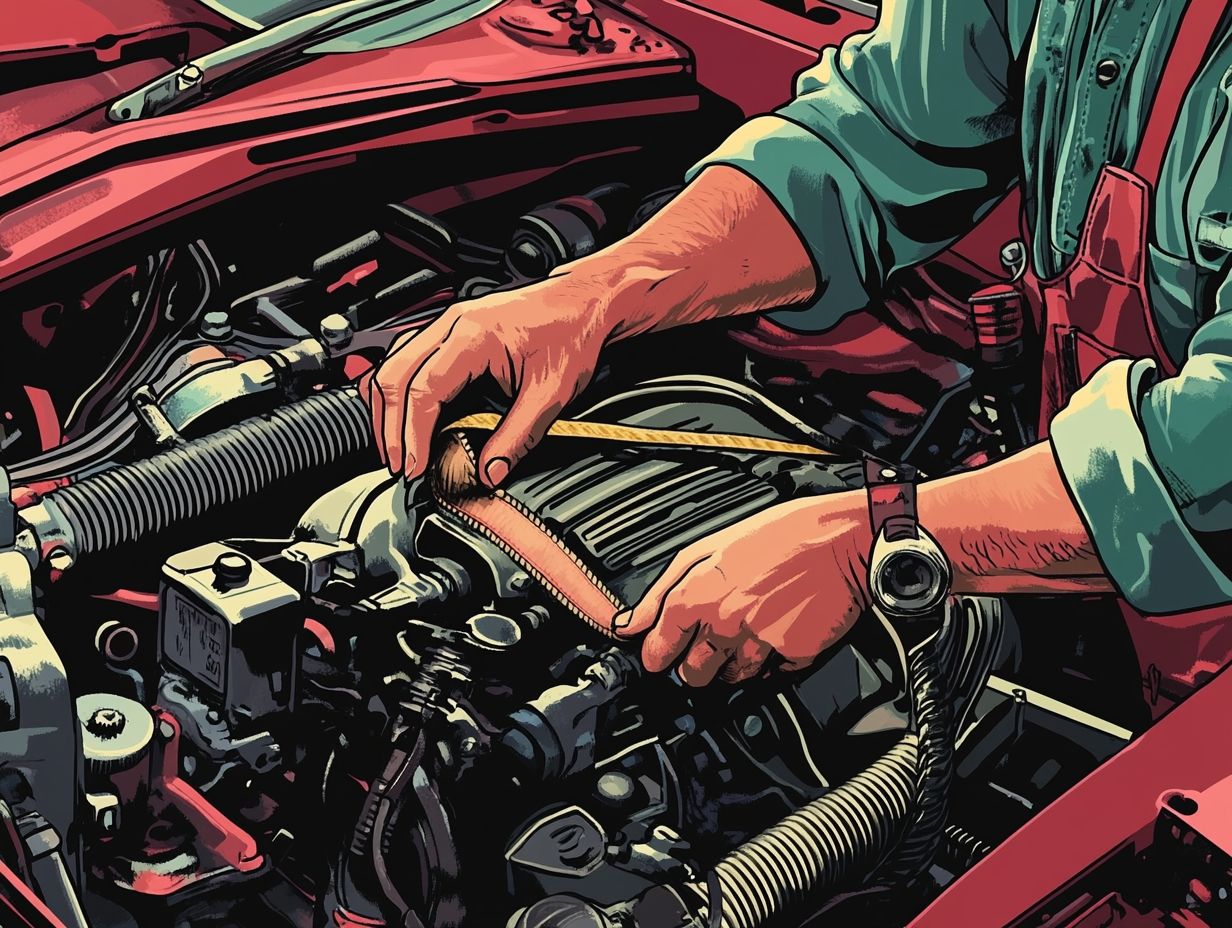
When considering the replacement of your timing belt, you have the option to embrace a DIY approach or to engage professional services. Each choice presents its unique advantages and disadvantages that can significantly impact your repair costs.
Summary
Maintaining and replacing your timing belt is vital for your engine’s health. Regular checks and adherence to manufacturer guidelines can save you from costly repairs and unexpected breakdowns. Don t wait! Check your timing belt today!
DIY vs Professional Service
Choosing between a DIY timing belt replacement and hiring a professional can greatly affect your repair quality and engine health.
For many car enthusiasts and budget-conscious individuals, diving into DIY repairs can lead to significant savings and a satisfying sense of achievement. These projects allow you to learn valuable skills and gain a deeper understanding of your vehicle.
However, there are times when opting for professional service makes more sense, especially for complex tasks requiring specialized knowledge and tools. This ensures that repairs meet the highest standards. If you lack experience or resources for intricate engine components, hiring an expert can provide peace of mind and guaranteed quality both vital for your vehicle’s safety and performance.
Ultimately, making an informed decision involves weighing the benefits of self-sufficiency against the unmatched expertise offered by professional services.
Cost and Time Considerations
Understanding the costs and time considerations for timing belt replacement is crucial for your budget planning and keeping your vehicle performing at its best.
Several factors influence this essential aspect of maintenance. The overall cost generally falls into three main categories: labor, parts, and any additional services you might need, such as water pump replacement, often recommended during timing belt replacement.
Mechanics charge varying hourly rates, and the engine’s complexity can significantly affect the total hours needed for the job. If you’re considering a DIY approach, remember that while it might save you money, it often requires specialized tools and a considerable time investment.
A professional can typically complete the replacement in just a few hours, while a DIY enthusiast might spend an entire weekend on the task. Considering these factors will help you create an effective maintenance schedule for your vehicle.
Frequently Asked Questions
When should you replace your timing belt?
Consult your vehicle’s owner’s manual for specific guidelines, but generally, it’s recommended to replace timing belts every 60,000-100,000 miles or every 5-7 years. For more detailed information, check out when to replace your car’s timing belt.
What are some signs that it’s time to replace your timing belt?
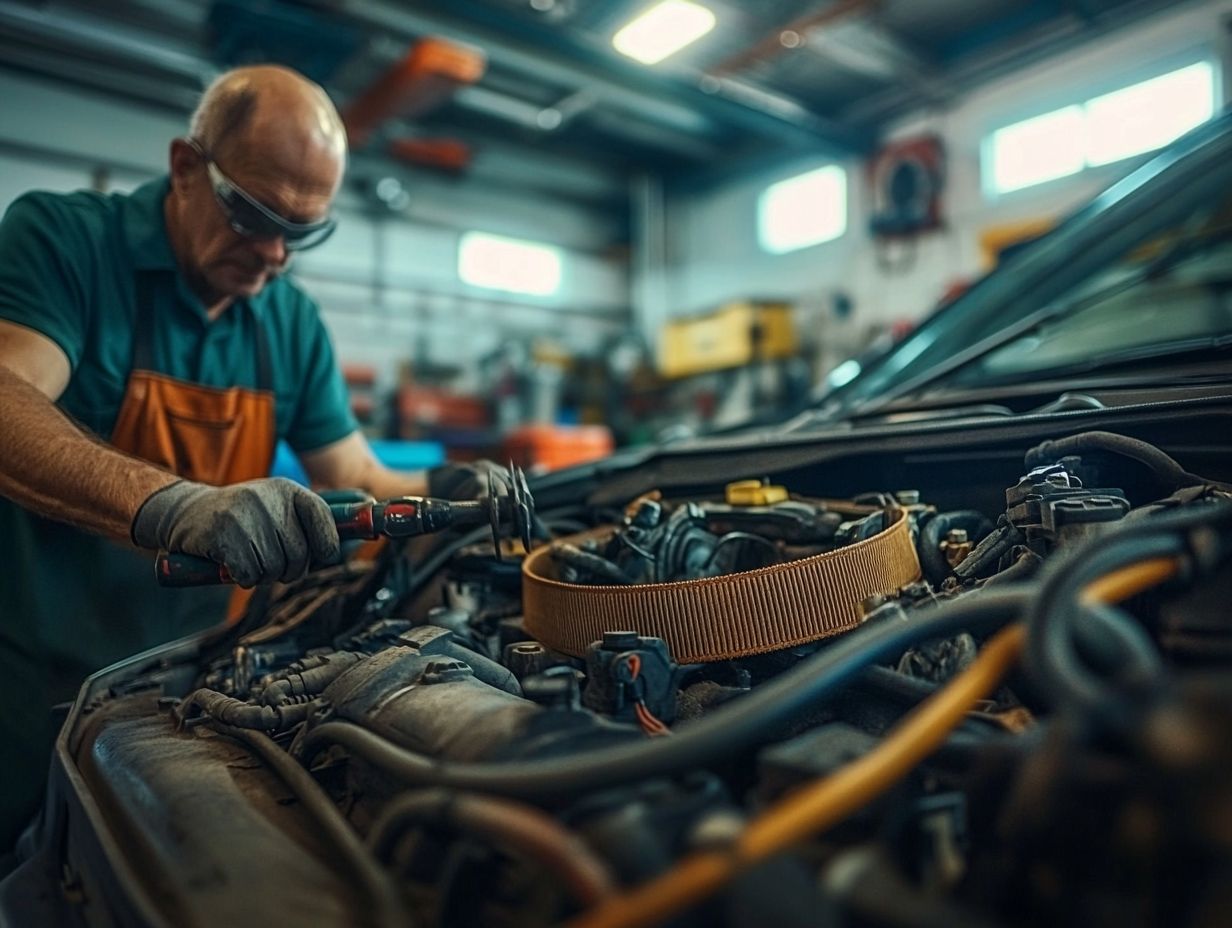
Signs that it’s time to replace your timing belt include difficulty starting your car, unusual engine noises, and visible wear or damage on the belt.
What happens if you don’t replace your timing belt?
Failing to replace your timing belt can lead to it breaking or slipping, causing severe engine damage and potentially leaving you stranded.
Can you replace the timing belt yourself?
Replacing your timing belt yourself is not recommended unless you have advanced mechanical skills and the necessary tools. It’s a complex and crucial engine component, best handled by a professional.
Do all vehicles have timing belts?
No, not all vehicles have timing belts. Some newer models use a timing chain, which typically lasts longer and doesn’t need to be replaced as often.
Is it necessary to replace other components when replacing the timing belt?
It’s advisable to replace other components, such as the water pump, tensioner, and pulleys, during a timing belt replacement. This ensures optimal performance and prevents future issues.
Don’t wait too long to replace your timing belt your engine’s health depends on it! For any concerns, inspect your timing belt or consult a professional today.

